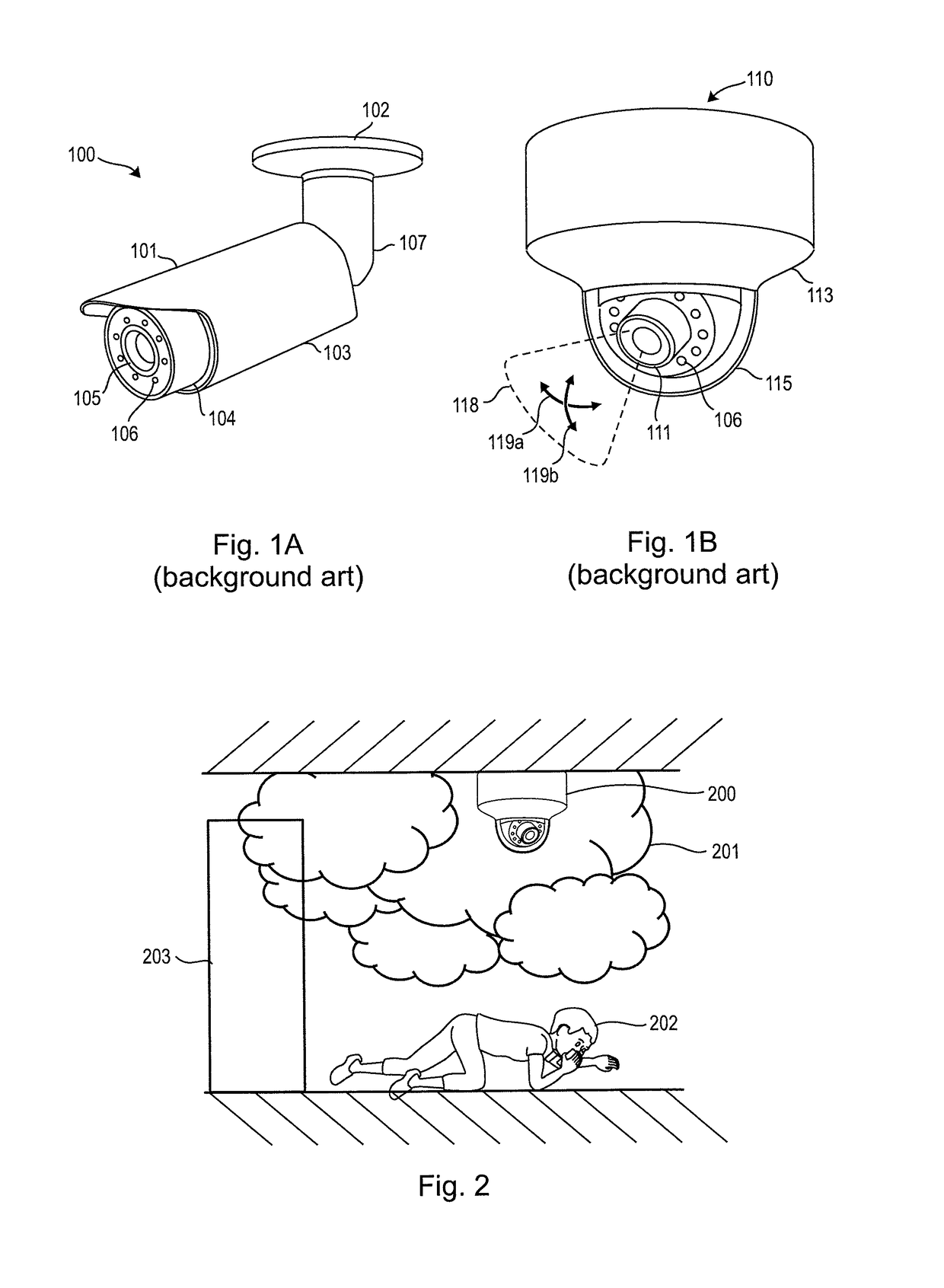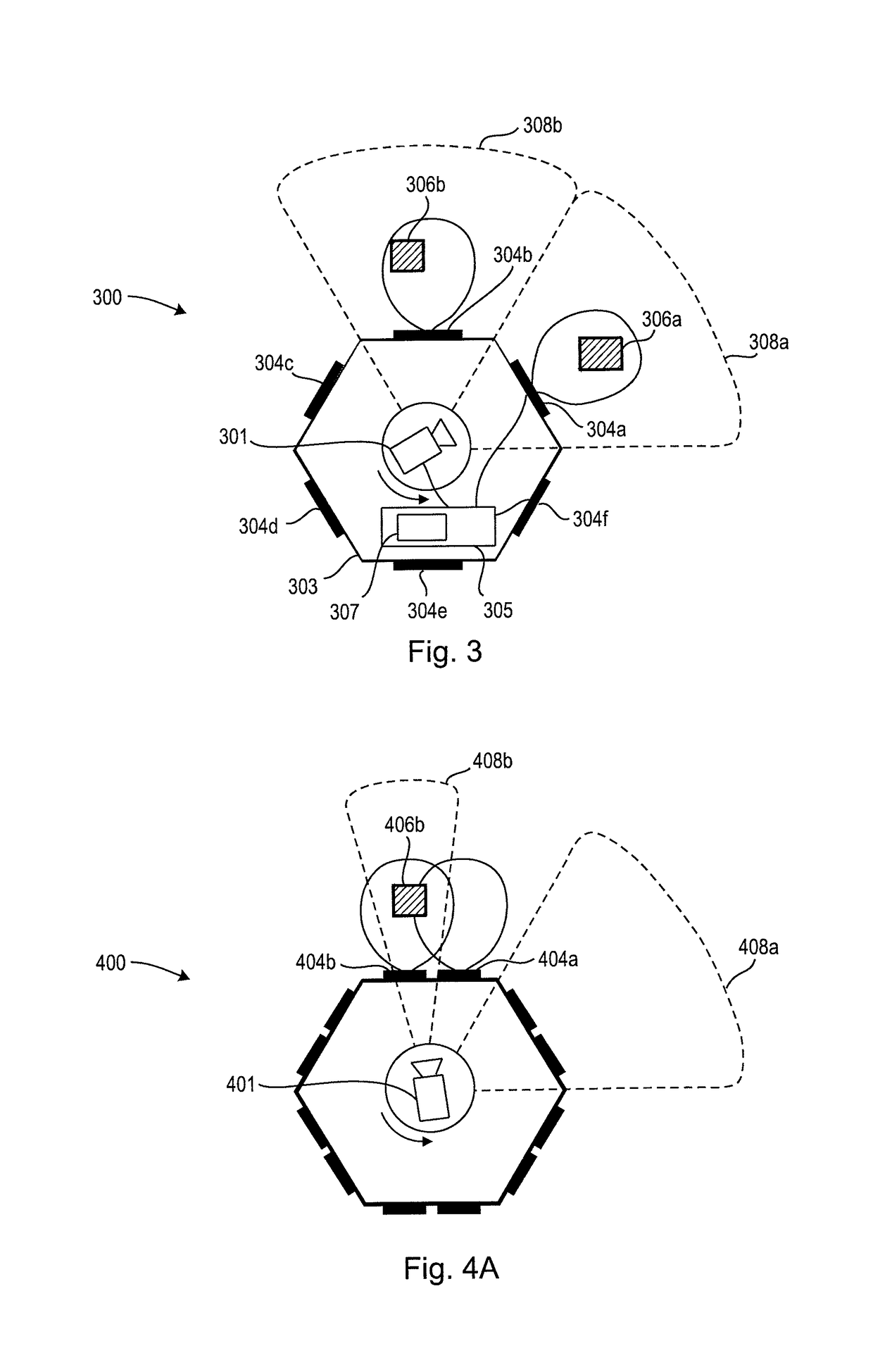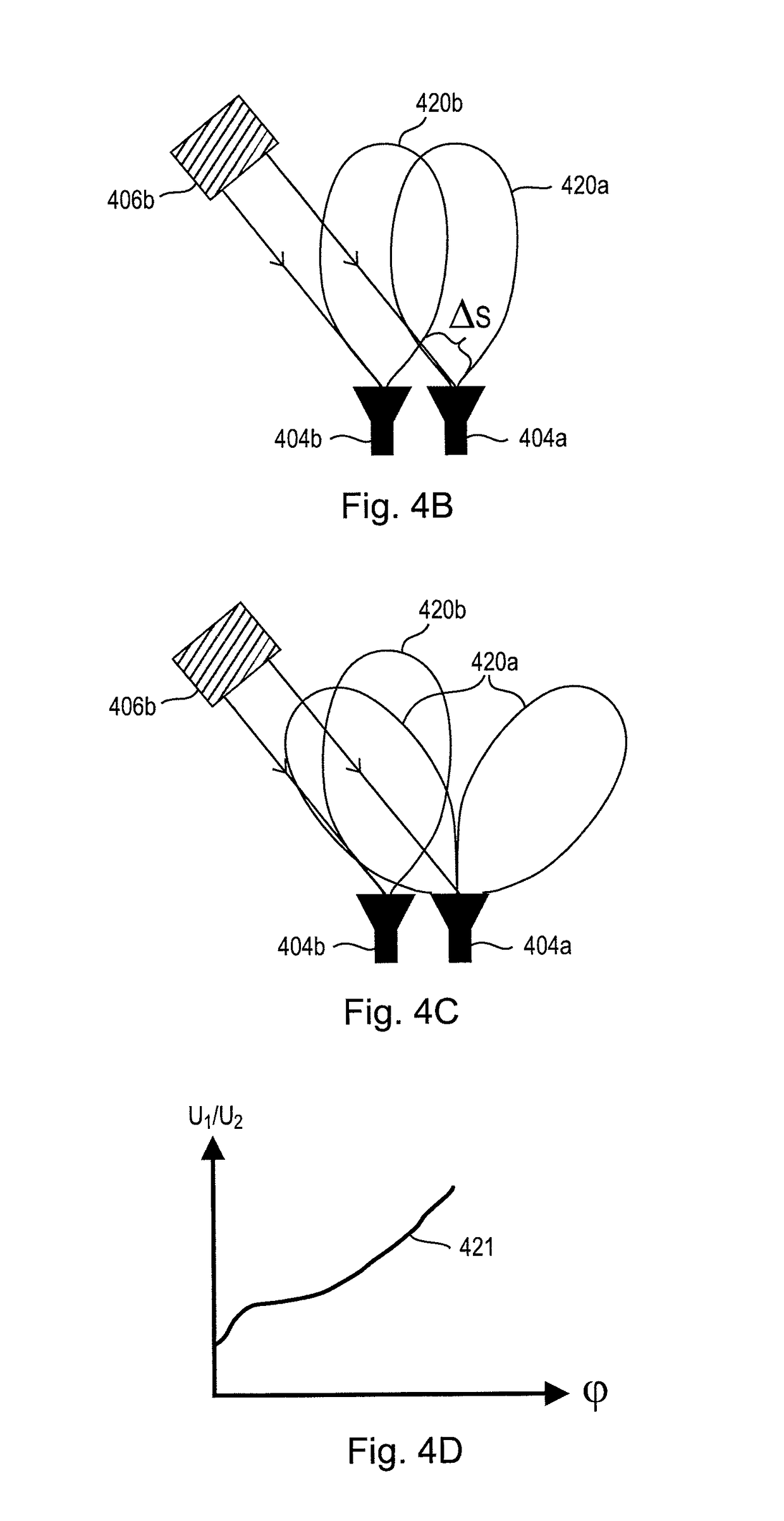Surveillance apparatus having an optical camera and a radar sensor
a technology of optical camera and radar sensor, which is applied in the field of surveillance cameras, can solve the problems of system visual impairment, optical surveillance camera image impairment, optical surveillance camera vulnerability to optical system attacks, etc., and achieve the effect of expanding surveillance capabilities and efficiently and flexibly monitoring
- Summary
- Abstract
- Description
- Claims
- Application Information
AI Technical Summary
Benefits of technology
Problems solved by technology
Method used
Image
Examples
embodiment 1
2. The surveillance apparatus ,
wherein size and / or orientation of said first field of view are variable with respect to said second field of view.
3. The surveillance apparatus according to any preceding embodiment,
wherein said optical camera is movable with respect to the radar sensor.
4. The surveillance apparatus according to any preceding embodiment,
further comprising a control unit that controls the optical camera based on radar information obtained with the radar sensor.
5. The surveillance apparatus according to any preceding embodiment,
wherein the optical camera further comprises a translucent camera cover.
embodiment 5
6. The surveillance apparatus ,
wherein the camera cover comprises a substantially hemispheric camera dome.
7. The surveillance apparatus according to any preceding embodiment,
having a polygonal, cylindrical or circular outline.
8. The surveillance apparatus according to any preceding embodiment,
wherein the radar sensor comprises an antenna element arranged on the periphery of the surveillance apparatus.
9. The surveillance apparatus according to any preceding embodiment,
wherein the radar sensor is adapted to provide at least one of a direction, range and speed of an object relative to the surveillance apparatus.
10. The surveillance apparatus according to embodiment 5,
wherein the camera cover further comprises a translucent antenna.
embodiment 10
11. The surveillance apparatus ,
wherein the translucent antenna comprises an electrically conductive layer comprising at least one of a translucent electrically conductive material and an electrically conductive mesh structure.
PUM
 Login to View More
Login to View More Abstract
Description
Claims
Application Information
 Login to View More
Login to View More - R&D
- Intellectual Property
- Life Sciences
- Materials
- Tech Scout
- Unparalleled Data Quality
- Higher Quality Content
- 60% Fewer Hallucinations
Browse by: Latest US Patents, China's latest patents, Technical Efficacy Thesaurus, Application Domain, Technology Topic, Popular Technical Reports.
© 2025 PatSnap. All rights reserved.Legal|Privacy policy|Modern Slavery Act Transparency Statement|Sitemap|About US| Contact US: help@patsnap.com



